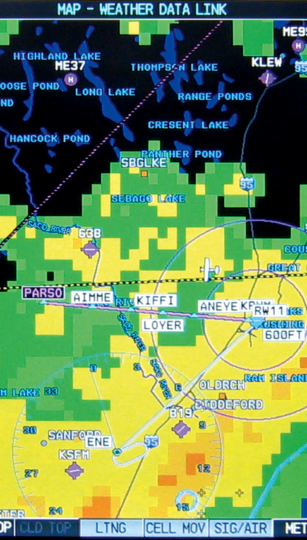Subscriber question:
"Are there any dangers in flying through heavy rain?" — Walter C.
Wally:
 “I have flown IFR in moderate to heavy rain many times and not experienced problems, but—there is always one of those isn’t there—most often heavy rain is associated with moderate or greater turbulence, which is a problem.
“I have flown IFR in moderate to heavy rain many times and not experienced problems, but—there is always one of those isn’t there—most often heavy rain is associated with moderate or greater turbulence, which is a problem.
But the turbulence is caused by convective activity, not precipitation.
How can you tell if the heavy precipitation ahead is convective or not? I look for the absence of cumulus activity. During preflight, I check the METARs, TAFs, and Convective SIGMETs for the absence of thunderstorms and turbulence. Enroute, your best information can be from pilot reports and ATC. Just remember: Conditions can change fast so make sure those reports are timely.
Another problem with heavy rain is water getting into your electronics. So if your socks are getting wet when you fly in the rain, that’s a clue you need to seal up some leaks. Also, if precipitation gets into the static system, it can potentially give you erratic pitot-static indications. Most systems are designed to prevent this, but be sure you know about your alternate static system and how it works, in case you need it.
So: In my view, flying VFR in heavy rain is not a serious problem as long as you maintain adequate visibility.
The same goes for IFR as long as you watch out for heavy precipitation associated with convection and you make sure your electronics stay dry.”
How do you use NEXRAD in the cockpit to avoid weather?
